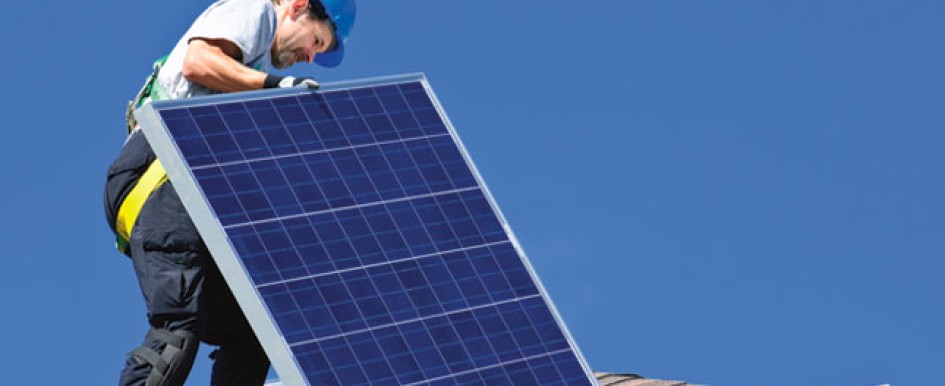
Here are a few accidents that might cause you to think about your safety compliance if your construction company works with renewable energy:
- 2008 – A solar technician was electrocuted when the solar panel metal railings he was carrying came into contact with overhead utility lines.
- 2009 – A solar installer was carrying panels on a roof when he crashed through a skylight and plunged 40 feet.
- 2010 – A young solar technician fell three stories to his death while installing solar panels on a public housing project.
- 2010 – Workers were performing routine maintenance on a wind tower when one worker unexpectedly energized a transformer, causing an arc flash that directly exposed another worker. The injured workers suffered second- and third-degree burns.
In recent years, the economic downturn affected historically strong industries such as construction and manufacturing, causing new industries to arise, most notably involving renewable energy. As renewable energy has grown, new safety concerns on these projects have arisen.
Each day in the renewable energy industry, workers suffer injuries that could have been prevented through basic awareness, communication and training.
Planning

For flat rooftops, warning lines at six feet may be the most popular solution, but they are often the least effective at fall protection. Conversely, portable guardrails are the most effective and less restrictive solution. Many manufacturers and providers offer rent-to-own programs for this equipment.
Personal fall arrest and restraint systems are also crucial. However, employee training and feasibility are always a concern. When it comes to personal fall arrest systems for photovoltaic, solar thermal and wind tower construction, there is no one solution that satisfies all needs. Make sure you consider the following safety factors:
- Electrical hazards/NFPA70E – Ensure that you are compliant with the National Fire Protection Association’s 2012 70E standard. This standard applies to verification of personnel qualification, job-hazard analysis, AC/DC incident energy calculations, flash boundaries, lock out and tag out, personal protective equipment, labeling and design.
- Struck-by and caught-between risks – When you take into account the high volume of equipment operating on renewable-energy projects combined with the vast amount of employee and subcontractor personnel presence, struck-by and caught-between hazards are of constant concern, and all related policies should be reviewed.
- Weather extremes – Renewable-energy projects are routinely exposed to extreme atmospheric conditions and the associated worker risk hazards, such as heat stroke and hypothermia. Lightning hazards are also of concern.
- Site security – Installation of solar panels on the roof of a building tends to draw spectators, as does the process of craning wind tower blades into place. Ensure the project has an effective security plan for the safety of workers and nearby pedestrians.
System Design
Engineering hazards out of the project is always a desired practice. For example, to minimize the potential for fall hazards, which are common on renewable energy projects, some contractors require crews to establish a boundary 10 to 15 feet away from exposed roof edges. Personal protective equipment always needs to be considered but not before engineering and administrative controls that might eliminate potential hazards altogether.
Subcontractor Management
Most renewable energy companies use a subcontractor turnkey model of operation. Don’t make the mistake of thinking that once a project is handed off to a subcontractor, your safety responsibility is handed off as well. Review the correcting and controlling employer guidelines in OSHA’s “Multi-Employer Citation Policy” directive. Use effective prequalification screening when it comes to procuring subcontractors, and don’t just analyze lagging indicators such as experience modification rates and OSHA recordable rates. Also examine the subcontractor’s injury and illness prevention program and safety training. Sometimes, foremen and supervisors are given the task of managing safety despite lacking adequate safety training. Talk to the CEO, the COO and the safety director, and don’t forget about the large quantity of temp workers that are procured for these projects.
Quality Maintenance
When quality is compromised, there is often a rush to correct the problem. In that haste, safety commonly takes a back seat. A similar pattern often occurs when service and maintenance are required. These jobs demand the same safety attention as other construction activity. Proper pre-job planning and job-hazard analysis should be conducted despite the small-scale nature of this work.

